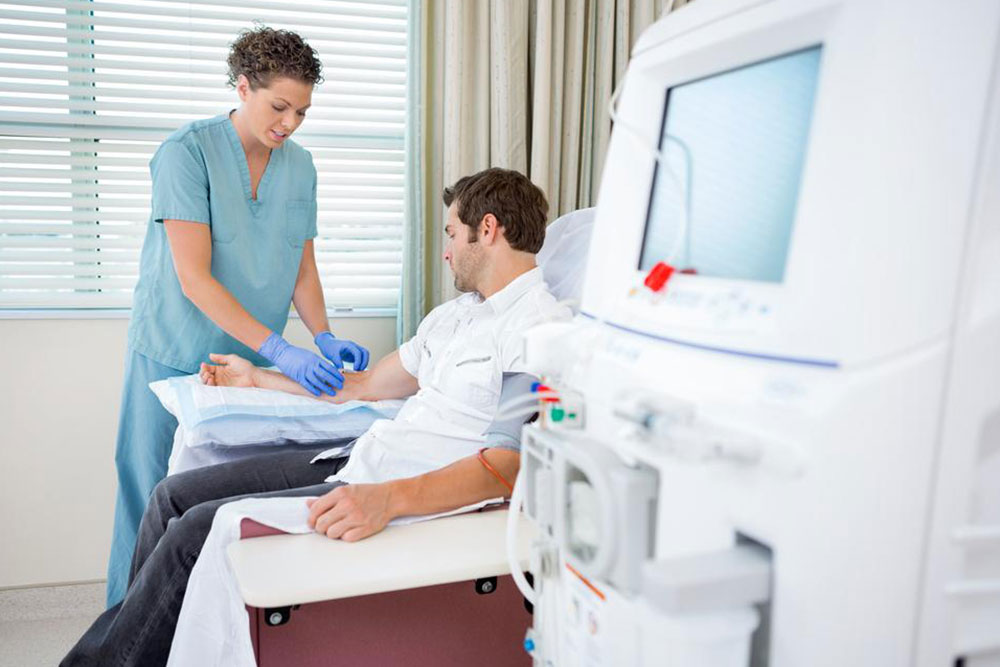Comprehensive Guide to Kidney Dialysis: Essential Knowledge for Patients
Discover essential insights into kidney dialysis, including when it's needed, the different types, treatment procedures, and potential risks. This comprehensive guide aims to help patients understand their condition better, improve treatment outcomes, and enhance quality of life through informed decision-making. Explore the critical aspects of dialysis to stay proactive and engaged in your healthcare journey.

Comprehensive Guide to Kidney Dialysis: Essential Knowledge for Patients
The human kidneys are vital organs responsible for filtering waste products from the blood, maintaining blood pressure, balancing electrolytes like sodium and potassium, regulating body pH, and producing important hormones that stimulate the production of red blood cells. When the kidneys lose their ability to perform these functions effectively, particularly in advanced stages of kidney disease, medical intervention becomes crucial. One of the most common treatments for kidney failure is dialysis—a life-sustaining procedure that artificially performs some of the kidney’s essential tasks.
Understanding the progression of chronic kidney disease (CKD) and the role of dialysis is vital for patients diagnosed with kidney impairment. CKD progresses through five stages, with stages 1 to 3 often considered mild or moderate. The most severe, stage 5, also called end-stage renal disease (ESRD), necessitates dialysis or kidney transplantation to sustain life.
Here are five critical facts about kidney dialysis that every patient should understand:
When is dialysis required? Dialysis becomes critical when the kidneys' ability to filter waste drops drastically—typically when 85-90% of kidney function is lost. Medical professionals measure this decline using the glomerular filtration rate (GFR), a blood test that evaluates how effectively the kidneys are filtering blood. When the GFR falls below 15, which usually indicates stage 5 CKD, dialysis or transplantation becomes necessary to prevent life-threatening complications.
The two primary types of kidney dialysis: There are mainly two types of dialysis procedures: hemodialysis and peritoneal dialysis. Hemodialysis is the more prevalent form. It involves circulating blood from the patient's body through an external machine that filters out waste products, excess fluids, and toxins. This process requires creating an access point, usually a surgically crafted fistula that connects an artery to a vein, providing a steady pathway for blood flow. The cleaned blood is then returned to the body.
Understanding peritoneal dialysis: This method involves filling the abdominal cavity with a sterile solution called dialysate through a catheter inserted into the abdomen. Waste products and excess fluids from the blood pass into the dialysate, which is then drained and discarded. Peritoneal dialysis offers greater flexibility, often allowing patients to perform treatments at home, which can improve quality of life and reduce the frequency of visits to a dialysis center.
Duration and frequency of dialysis sessions: Hemodialysis sessions usually last about three to four hours and are typically scheduled three times a week. Patients undergoing peritoneal dialysis spend around four to five hours with dialysate in the abdomen daily or several times a day, depending on their treatment plan. The choice between home-based and center-based dialysis depends on individual health status, lifestyle, and medical advice.
Potential risks associated with long-term dialysis: While dialysis is a life-saving treatment, it also carries certain risks. One notable concern is the development of kidney cysts, which can lead to symptoms such as fever, localized back pain, hematuria (blood in urine), or even tumor formation. However, most research suggests that kidney cyst formation is more directly linked to the progression of chronic kidney disease itself rather than the dialysis procedure per se. Nonetheless, ongoing medical monitoring is essential for detecting and managing any complications that may arise during long-term treatment.
To optimize health outcomes, patients on dialysis should maintain regular communication with their healthcare team, adhere to prescribed treatment schedules, and monitor for potential complications. Advances in dialysis technology, patient education, and personalized treatment plans continue to improve quality of life and survival rates for individuals with severe kidney disease.
Please note, this comprehensive overview aims to provide a clear understanding of kidney dialysis, its importance, types, and potential risks, empowering patients to manage their condition effectively and stay informed about their treatment options.




